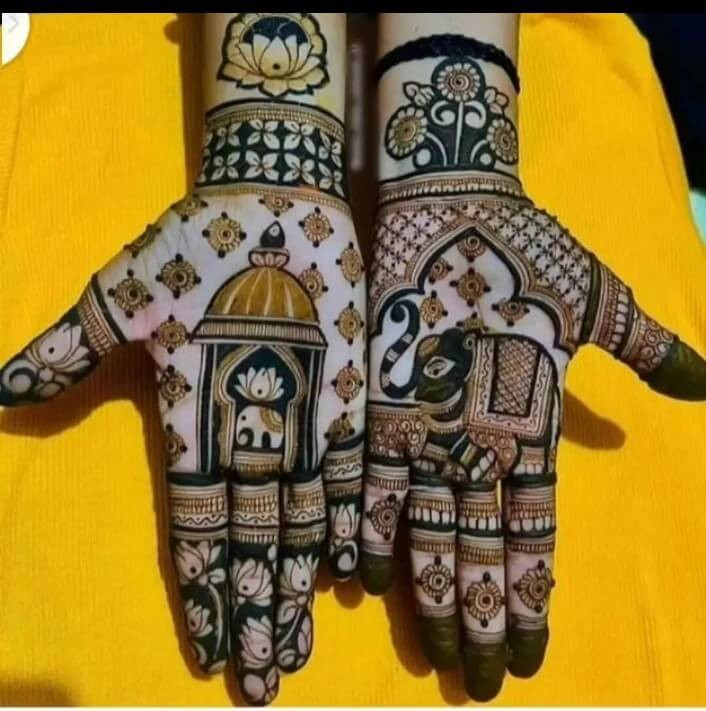Introduction
Mehndi, a traditional art form with profound origins in Indian culture, has become an essential component of weddings and celebrations. Its elaborate decorations not only add beauty but also hold cultural importance and blessings. For brides and their loved ones, selecting the perfect mehndi design is an important part of the celebration. In this article, we will look at the elegance of many mehndi styles, including front-hand simple mehndi patterns, Arabic mehndi designs, rear-hand mehndi designs, and simple wedding mehndi designs.
Front hand simple mehndi design: timeless elegance
Simplicity typically speaks volumes, which is especially true for front-hand mehndi patterns. These designs are ideal for folks who enjoy simple, yet gorgeous patterns. These designs typically begin with the fingers and cascade down to the wrist, producing a sophisticated look without overwhelming the hand.
One popular form is finger mehndi, which features elaborate patterns on the fingers while leaving the rest of the hand relatively plain. This style is great for bridesmaids or close family members who want to compliment the bride's extravagant mehndi without taking over the focus.
Arabic Mehndi Design: A Fusion of Bold and Beautiful
Arabic mehndi designs are known for their bright and creative patterns. These designs, which originated in the Arabian Peninsula, have grown in favor across India due to their unique appeal. Arabic mehndi designs are distinguished by their flowing lines, flowery motifs, and frequent use of empty spaces, which create a stunning contrast.
These designs generally include huge floral themes and paisleys, making them ideal for brides want to make a statement. The beauty of Arabic mehndi lies in its versatility—it may be used to cover both the front and back of the hand, as well as stretched up the arms for a more dramatic look.
Back Hand Mehndi Design: A Canvas for Creativity.
The back of the hand provides a large area for imaginative mehndi designs. Back hand mehndi patterns can be simple and elegant or ornate and elaborate, depending on the event and personal preferences.
A vine or mandala design focused on the back of the hand and extending to the fingers is a popular choice for a basic but attractive appearance.
These designs are not only stunning, but they also match conventional jewelry such as bangles and rings, improving the whole bridal look.For more complex occasions, brides may choose complicated designs with detailed patterns such as peacocks, flowers, and geometric forms, all perfectly woven together to create a masterpiece on the back of the hand.
Simple Bridal Mehndi Design: Elegant and refined
Every bride wants her mehndi to be beautiful, expressing her style and enhancing her bridal glow. Simple bridal mehendi designs are ideal for brides who want a more subtle but lovely look. These designs frequently include classic features such as floral patterns, delicate vines, and traditional motifs like bridal and wedding figurines.
A current trend in simple wedding mehndi designs is to convey a tale, reflecting the couple's journey and including aspects such as their names or significant symbols. These individual accents make the mehndi special and memorable, adding a layer of sentiment to the wedding gown.
Conclusion
Mehndi is more than just a type of body art; it is a custom that adds joy, beauty, and blessings to important events. There is a style to suit every taste and occasion, whether you prefer the simplicity of front-hand mehndi designs, the boldness of Arabic patterns, the originality of back-hand designs, or the elegance of simple bridal mehndi. Our wedding planning firm is dedicated to bringing these beautiful traditions to life, with expert mehndi artists available throughout India to guarantee that your special day is adorned with the ideal mehndi design.



